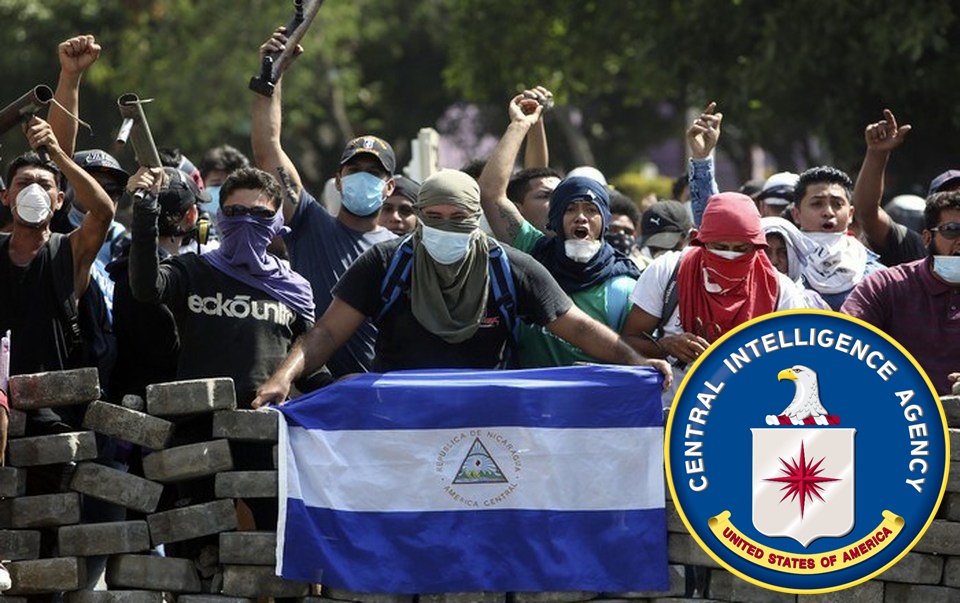
Biased new report lends weight to U.S. regime-change operations targeting left-wing Sandinista government.
While the United States pays little regard to the human rights of many of its own citizens, it manifests intense interest in those of countries that it regards as its enemies.
Nicaragua, designated by both Trump and Biden as a “strategic threat,” is seen as one of those enemies. Of the countries selected for their own annual human rights assessment by the U.S. State Department, Nicaragua merited special attention in 2022, with a 43-page report compared with, for example, only a 36-page analysis of neighboring El Salvador, where 66,000 people have been subjected to mass arrests in the past year. This is part of a highly selective approach in which human rights violations by U.S. allies are downplayed or ignored.
Worse, the U.S. exerts extraordinary influence on international bodies to follow suit, producing their own reports in the same ilk. The Organization of American States (OAS), largely financed by Washington, will readily scrutinize the performance of left-wing governments in Latin America at its bidding, while of course never threatening to monitor human rights in the U.S. itself. Perhaps more alarming, the United Nations human rights apparatus has been similarly instrumentalized to serve Washington’s agenda, as former UN rapporteur Richard Falk has argued.
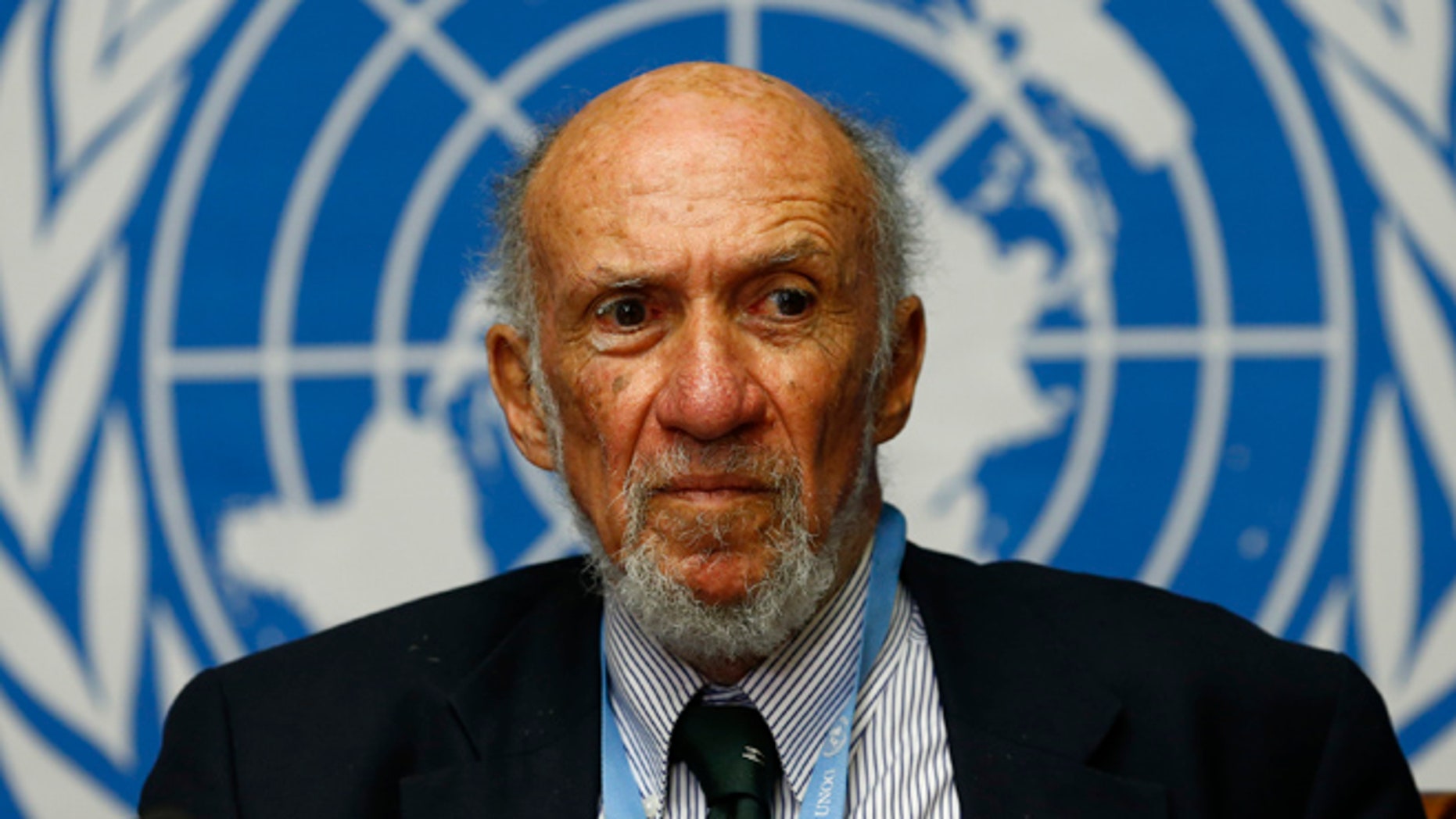
This was evident again in March when the UN Human Rights Council released a new report by a “group of human rights experts on Nicaragua.”
The report claimed that President Daniel Ortega’s government had “executed” 40 people, disregarding the context of violent opposition attacks using firearms. The report also claimed that the government ordered hospitals not to treat wounded demonstrators, when the then health minister had made clear that anyone injured should receive treatment. It goes on to detail a range of other alleged government human rights abuses, including torture, where the evidence is contested.
The aim of demonizing Nicaragua was apparent at the press conference to launch the report: One of the “experts,” Jan-Michael Simon, a senior researcher at the Max Planck Institute for the Study of Crime, Security and Law in Germany, likened conditions in Nicaragua to those in Nazi Germany (the Sandinista government’s actions are “exactly what the Nazi regime did”).
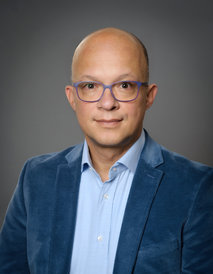
Given that the group had not even visited the country, this was not only absurd but grossly irresponsible. Yet it enabled The New York Times, never slow to criticize the Sandinista government, to come up with the headline “Nicaragua’s ‘Nazis’: Stunned Investigators Cite Hitler’s Germany.”
However it is the damaging content of the report itself that led the Nicaraguan Solidarity Coalition to launch a petition demanding that it be with withdrawn, already co-signed by human rights experts Alfred de Zayas and Professor Falk.
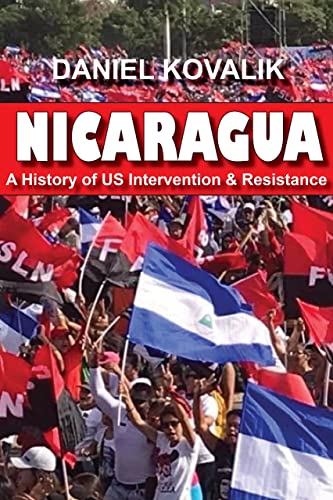
The report’s focus is on the violence in 2018, which Dan Kovalik has characterized in his new book as bringing Nicaragua “to the verge of civil war, with hundreds killed and many more injured.” The group of experts was charged with examining “all alleged human rights violations and abuses committed in Nicaragua since April 2018” and they claim to have adopted a “victim-centered” approach to their task.
It is extraordinary, then, that the report focuses almost entirely on the human rights of the perpetrators of what became a violent coup attempt, rather than on the rights of the huge numbers of ordinary Nicaraguans who suffered the consequences of their violence.
It is as if the experts had produced a report focusing on, say, the attack on the U.S. Capitol on January 6, 2020, or the recent attack on Brazil’s presidential palace, and focused on the behavior of those repelling the attacks instead of on the injuries and mayhem caused by the attackers.
Because it took this stance, the experts’ 300-page report found no space for incidents such as the attempted murder of student leader Leonel Morales, who was kidnapped, shot and left for dead in a drainage ditch. Or the burning down of Radio Ya, whose 21 workers only narrowly escaped death.

Or the sacking of the municipal depot in the city of Masaya, in which all the vehicles were destroyed and the workers so badly beaten or tortured that one later had his arm amputated. Or the attack on the police station of Morrito, that left five dead and nine kidnapped and beaten.
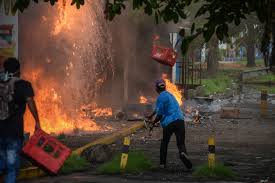
Or countless other crimes by “protesters” whom the report describes as largely peaceful, despite the gruesome scenes of torture and humiliation they filmed and then posted on social media. It contains not a single reference to any of these victims, let alone quoting from testimony (as it does in the cases of alleged victims of government violence).
The Nicaraguan government refused to take part in this exercise, having participated in similar ones in the past and found that its evidence was largely ignored. It has produced detailed evidence to show the steps it took to facilitate access by one set of international investigators, and how its cooperation was then abused.
As a result of past experiences, it denied permission for the group to visit the country, so the experts were reliant on evidence collected remotely. In these circumstances, the group might have been expected to balance carefully the sources and material it used.
In practice the opposite happened: Its preferred sources were opposition media or NGOs, in most cases ones that had received U.S. “democracy promotion” (meaning “regime-change”) funding in the years prior to the 2018 coup attempt, as Nan McCurdy has previously described.
The experts themselves are opaque about how their work was done. Requests for the names of the other team members assembling the report were refused, a lack of transparency which inevitably leads to the suspicion that its researchers might well have been drawn from opposition-supporting “human rights” groups or think tanks.
The report’s bias is obvious from the fact that it makes no reference at all to independent examinations of previous human rights reports, which have shown them to be unbalanced and to contain key omissions.
For example, I was part of a group who prepared the the 2019 report Dismissing the Truth, which identified dozens of inaccuracies and omissions in a report on Nicaragua by Amnesty International.
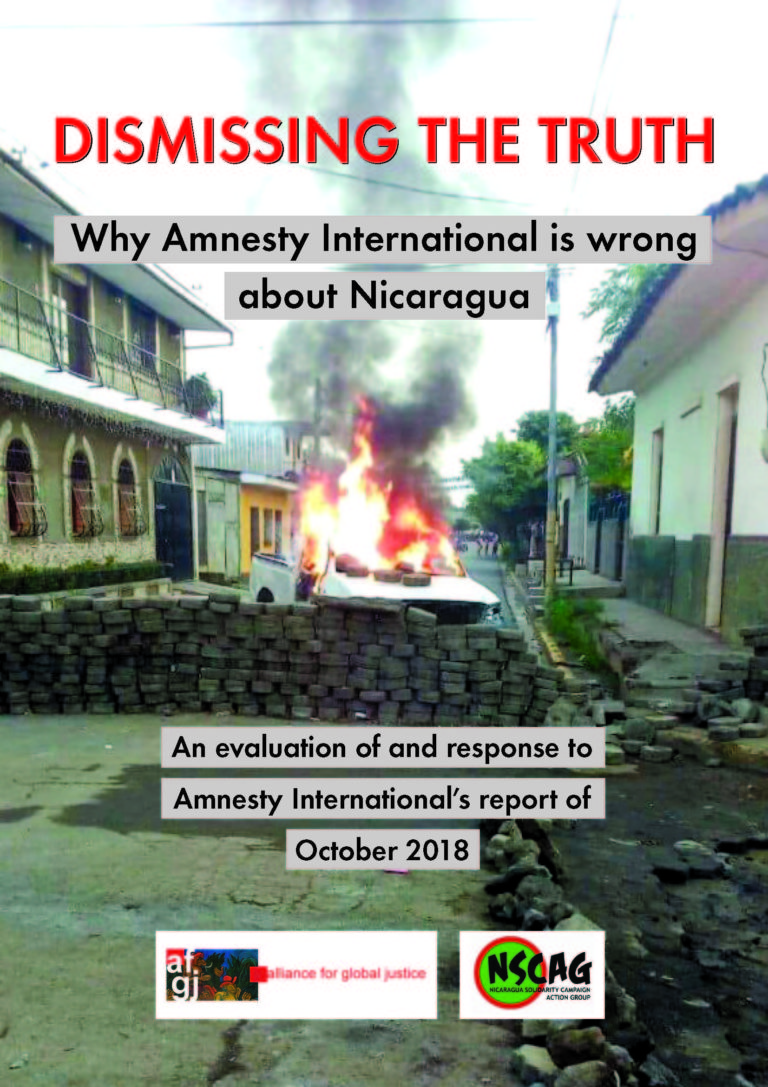
I also helped compile an open letter from the Alliance for Global Justice to the Inter-American Commission on Human Rights, about the errors in a previous “expert” report that it published.
I have shown the bias and manipulation in the work of Nicaragua’s so-called independent human rights groups, several of which are now based in Costa Rica. The new UN report uses all of these questioned or discredited sources, while ignoring the various detailed, published criticisms of them.
How does a report focused on events five years ago pretend to justify new sanctions on the Nicaraguan government?—by claiming that the government has been engaged “since April 2018 and up to the time of writing this report…[in] a widespread and systematic attack…against a part of the Nicaraguan population.”
In making this assertion, the experts not only discount evidence of crimes by those arrested since 2018, but also ignore or downplay the many acts of clemency that took place, culminating in a general, conditional amnesty in 2019 that covered even the organizers of fatal attacks on police stations. The strong implication is that abuses such as “extrajudicial killings” which it alleges—on highly questionable grounds—occurred in 2018, still take place now in a country which is entirely at peace.
The fundamental problem is that the expert group pretends that the opposition forces in 2018 were either unarmed or had only homemade weapons. It said that “acts of violence [were] perpetrated by some demonstrators in the context of the protests, including stone throwing, the use of homemade weapons—mainly ‘mortars,’ and some ‘contact bombs’ and Molotov bombs.”
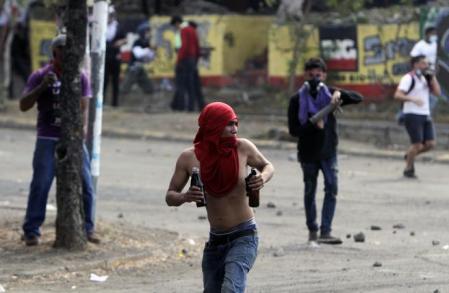
They also “documented the use of conventional weapons in some cases.” These acts “allegedly” resulted in the deaths of 22 police officers and injuries to more than 400 more from gunfire.
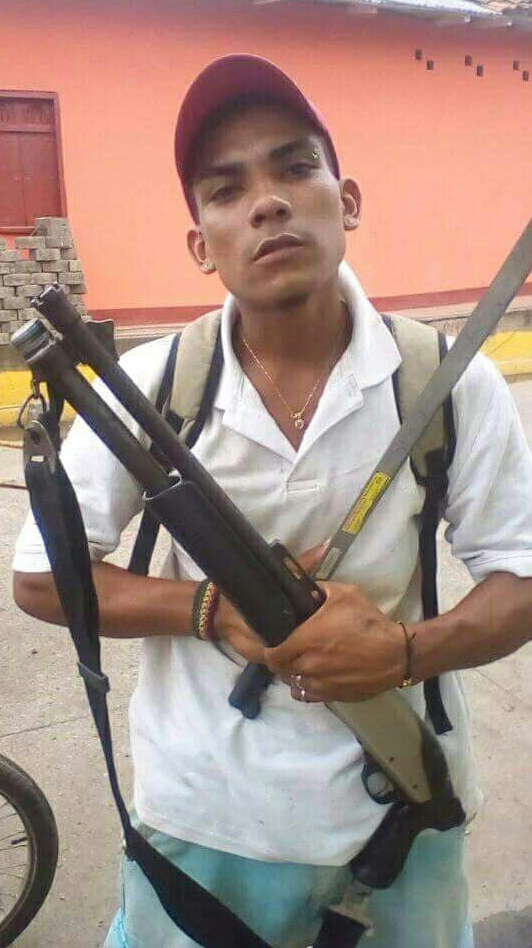
Given that almost all these deaths and injuries were the result of firearm injuries, there is a very obvious disparity between the group’s assessment of the behavior of the opposition groups and what actually happened. If they had also taken into account the widespread kidnappings, torture, arson attacks, robberies and other crimes, they might have come closer to producing a report which reflected the real experience of Nicaraguans in 2018.
Instead, the UN report is clearly intended to be a whitewash of the violence which (as Kovalik says) brought the country “to the verge of civil war,” just as so-called “human rights” bodies were used to whitewash the violence of the “Contras” in the U.S.-directed war of the 1980s. The opposition explicitly aimed to overthrow the Nicaraguan government: At the start of the violence and during the national dialogue that began in May 2018, opposition activists and their leaders openly stated that their objective was the removal of President Daniel Ortega.
There is nothing surprising about the line taken by the new report, as a litany of official reports since 2018 have done the same. The danger of the UN’s latest attack on Nicaragua is that it comes at a time when Washington is clearly deliberating new sanctions.
Indeed, not failing to step up to the task, the group explicitly calls for additional sanctions in one of its recommendations. In doing so, it ignores the UN Human Rights Council’s own assessments of sanctions issued without its authority (known as “unilateral coercive measures”), which conclude that their legality is highly questionable.
Given that the “experts” who wrote this latest report are international lawyers, this is remarkably unprofessional. But it is even more extraordinary that the United Nations would publish such an unbalanced report attacking one of its own member countries, promoted in such a sensational manner. It could be tailor-made to give Washington the go-ahead to continue with the illegal measures against Nicaragua that it has already taken, and which it might now decide to strengthen still further.

CovertAction Magazine is made possible by subscriptions, orders and donations from readers like you.
Blow the Whistle on U.S. Imperialism
Click the whistle and donate
When you donate to CovertAction Magazine, you are supporting investigative journalism. Your contributions go directly to supporting the development, production, editing, and dissemination of the Magazine.
CovertAction Magazine does not receive corporate or government sponsorship. Yet, we hold a steadfast commitment to providing compensation for writers, editorial and technical support. Your support helps facilitate this compensation as well as increase the caliber of this work.
Please make a donation by clicking on the donate logo above and enter the amount and your credit or debit card information.
CovertAction Institute, Inc. (CAI) is a 501(c)(3) non-profit organization and your gift is tax-deductible for federal income purposes. CAI’s tax-exempt ID number is 87-2461683.
We sincerely thank you for your support.
Disclaimer: The contents of this article are the sole responsibility of the author(s). CovertAction Institute, Inc. (CAI), including its Board of Directors (BD), Editorial Board (EB), Advisory Board (AB), staff, volunteers and its projects (including CovertAction Magazine) are not responsible for any inaccurate or incorrect statement in this article. This article also does not necessarily represent the views the BD, the EB, the AB, staff, volunteers, or any members of its projects.
Differing viewpoints: CAM publishes articles with differing viewpoints in an effort to nurture vibrant debate and thoughtful critical analysis. Feel free to comment on the articles in the comment section and/or send your letters to the Editors, which we will publish in the Letters column.
Copyrighted Material: This web site may contain copyrighted material the use of which has not always been specifically authorized by the copyright owner. As a not-for-profit charitable organization incorporated in the State of New York, we are making such material available in an effort to advance the understanding of humanity’s problems and hopefully to help find solutions for those problems. We believe this constitutes a ‘fair use’ of any such copyrighted material as provided for in section 107 of the US Copyright Law. You can read more about ‘fair use’ and US Copyright Law at the Legal Information Institute of Cornell Law School.
Republishing: CovertAction Magazine (CAM) grants permission to cross-post CAM articles on not-for-profit community internet sites as long as the source is acknowledged together with a hyperlink to the original CovertAction Magazine article. Also, kindly let us know at info@CovertActionMagazine.com. For publication of CAM articles in print or other forms including commercial internet sites, contact: info@CovertActionMagazine.com.
By using this site, you agree to these terms above.
About the Author
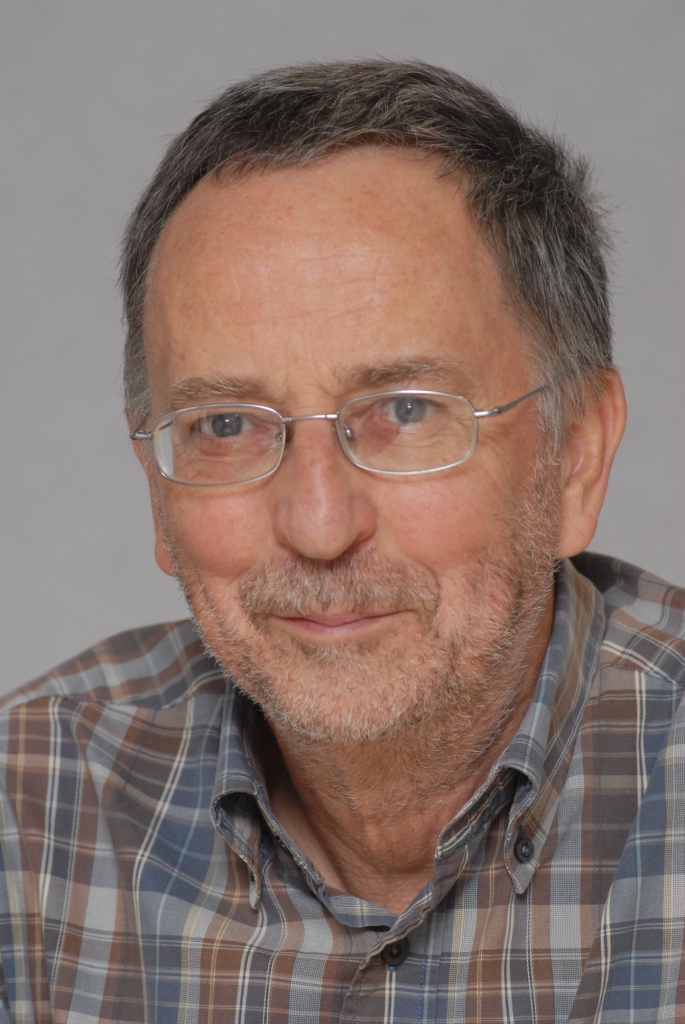
John Perry is based in Masaya, Nicaragua and writes for the Council on Hemispheric Affairs, London Review of Books, FAIR and elsewhere.
John can be reached at johnperry4321@gmail.com or by his twitter handle @johnperry21.





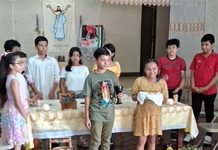
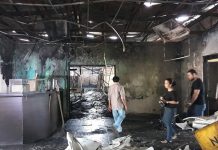

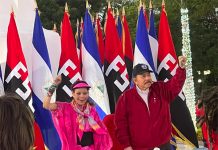


What do you refer to as an armed attack on the White House?
I’m not sure what you mean by this. The article has a brief reference to the attack on the US Capitol, comparing the treatment of it with the treatment of the much more serious attack on government institutions in Nicaragua.
[…] The uS continue to target Nicaragua, https://covertactionmagazine.com/2023/04/01/the-united-nations-is-being-used-by-the-u-s-in-its-propa… […]
[…] Опубликовано вБез рубрики https://covertactionmagazine.com/2023/04/01/the-united-nations-is-being-used-by-the-u-s-in-its-propa… […]
[…] This article was originally published on CovertAction Magazine. […]
Interesting information to read:
https://confidencial.digital/english/cid-gallup-78-regard-ortegas-unopposed-reelection-illegitimate/
Well of course there was a huge campaign to discredit the 2021 elections. If you would like to see some of the allegations, and responses to them, there is more here: https://www.coha.org/if-there-was-fraud-in-nicaraguas-elections-where-is-the-proof/
CID Gallop also conducted the following poll in 2012. So it is not as if they have a specific political agenda. They just interview as many people as possible and then compile the results. They have been in business for 45 years with an excellent reputation.
CID Gallup Poll: Nicaragua Safest in Central America
A 2012 poll by CID Gallup Latin America showcases Nicaragua as the Central American country with the lowest levels of criminality in the region, including Panama and the Dominican Republic.
It’s worth bearing in mind that CID Gallup is not related to the internationally known Gallup, it is a firm based in Colombia. That said, it uses telephone polling, whereas M&R uses a bigger sample and does face-to-face polling, including in rural areas. You have to bear in mind there was a huge campaign (backed by US money through its ‘RAIN’ program) to discredit the elections. Anyone here in November 2021 could see that there was a good turnout and the claims of massive abstentons were clearly false.
Thanks both. The Amnesty piece says the government is targeting Vilma Nuñez of Cenidh. Of course, like the other two main “human rights” groups, they accepted money from foreign governments to portray Nicaragua in the worst light possible. Amnesty never discusses the issue of how these groups can be “independent” when they receive money from US and EU agencies who are promoting regime change in Nicaragua. The report Dismissing the Truth, referenced in the article, says much more about Amnesty’s methods and its reliance on these local groups.
According to Amnesty International’s Web Site, they never accept money from governments:
FINANCES AND PAY
Who finances Amnesty International’s work?
The overwhelming majority of our income comes from individuals the world over.
These personal and unaffiliated donations allow Amnesty International (AI) to maintain full independence from any and all governments, political ideologies, economic interests or religions.
We neither seek nor accept any funds for human rights research from governments or political parties and we accept support only from businesses that have been carefully vetted.
By way of ethical fundraising leading to donations from individuals, we are able to stand firm and unwavering in our defence of universal and indivisible human rights.
The global Amnesty movement is made up of a network of national sections and the International Secretariat.
The problem is not that Amnesty receives government money, but that it uses evidence from local “human rights” bodies that do so. One of the Nicaraguan bodies, ANPDH, was actually set up originally by the Reagan administration to whitewash the atrocities committed by the Contras. For several years it was based in Miami.
Incidentally the authors of “Dismissing the Truth” made several efforts to engage with Amnesty, without success.
Thank you for your feedback. Do you have any news on Oscar Rene Vargas. Do you know if he is still in prison. For more info, see link
https://nacla.org/oscar-rene-vargas-nicaraguas-latest-prisoner-conscience
Oscar Rene Vargas was one of the 222 who went to Washington, but I imagine he is now back in Costa Rica, where I believe he lived before.
Thank you. Yes, I found his name on the list of 222 political prisoners who were sent to Washington. His full name is Oscar René Antonio Vargas Escobar. He has a heart condition and a pacemaker, so it is nice to learn that this famous sociologist has been freed from that horrible prison where he was unfairly detained.
Bear in mind that in 2018 Vargas recorded an interview calling for an armed attack on Daniel Ortega’s home, which he said would cost several hundred lives but would be worth it if it led to Ortega being killed. His was one of many incendiary interviews at the time, which led to violent attacks such as the one on Radio Ya. What would happen in the US if a prominent politcal character went on NPR and called for an armed attack on the White House? – oh, hang on, something like that happened and many are serving prison sentences…
Can you provide evidence of this interview from 2018 in which you say that Oscar made these comments. If I can read or listen to this interview it will be better for me.
I will try to post the link but the web page may think it is spam. The 2018 interview on 100%Notiicas is called “Día 106 #SOSNicaragua: Opinión de Oscar René Vargas” – he says that one option is that large numbers assault Ortega’s home, maybe 500 people get killed, but that Ortega gets string up from a lamppost like happened with Mussolini: https://www.youtube.com/watch?v=5YA3RrZetqY
Excellent article. Here is some additional info.
https://amnesty.ca/human-rights-news/nicaragua-ortega-government-new-pattern-of-repression/
Thank you John. Excellent work.